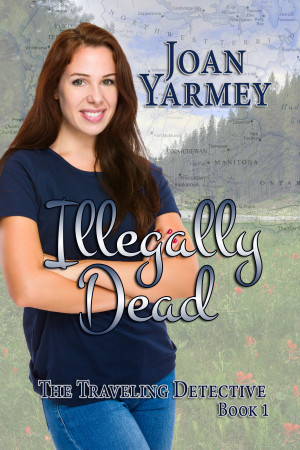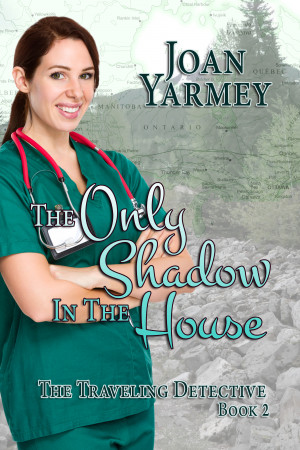They're changing guard at Buckingham Palace -
Christopher Robin went down with Alice.
Alice is marrying one of the guard.
"A soldier's life is terrible hard,"
Says Alice.
They're changing guard at Buckingham Palace -
Christopher Robin went down with Alice.
We saw a guard in a sentry-box.
"One of the sergeants looks after their socks,"
Says Alice.
They're changing guard at Buckingham Palace -
Christopher Robin went down with Alice.
We looked for the King, but he never came.
"Well, God take care of him, all the same,"
Says Alice.
They're changing guard at Buckingham Palace -
Christopher Robin went down with Alice.
They've great big parties inside the grounds.
"I wouldn't be King for a hundred pounds,"
Says Alice.
They're changing guard at Buckingham Palace -
Christopher Robin went down with Alice.
A face looked out, but it wasn't the King's.
"He's much too busy a-signing things,"
Says Alice.
They're changing guard at Buckingham Palace -
Christopher Robin went down with Alice.
"Do you think the King knows all about me?"
"Sure to, dear, but it's time for tea,"
Says Alice.
A. A. Milne's poem Buckingham Palace, written about his son Christopher Robin of Winnie-the-Pooh fame, was one of the first I ever learned. Written in 1924 it was about the palace of King George V. When he died in 1936 the British people had King Edward VIII, who abdicated in less than a year, and then George VI, the late Queen's father. After him came our much loved Queen Elizabeth II.
Now, as the whole world knows, she has gone. The guard at Buckingham Palace has indeed changed. At the very moment she drew her last breath, King Charles III became King, as is the British tradition. So far he is proving to be much more popular that the doomsayers have been predicting for so many years. Not even the unkind and ludicrous portrayal of him in the Netflix series 'The Crown' seems to have dented the affection being displayed by so many members of the British public. This is probably because, as a nation whose monarchy can trace its bloodline back more than 1,200 years, we identify with him and his ancestors. Their history, both the good and the bad, is our history.
Times are changing of course, but nearly every little girl in the UK still delights in dressing up as a queen or a princess, while young boys use sticks for swords and race to be first to the top of a hill where they crow that they are 'King of the Castle!' It's a game that has been played for centuries, in the same way that many of our centuries old nursery rhymes and folk tales evoke our past kings and queens.
These stories, rhymes and games are part of us, as is the casual way we refer to members of the royal family by their first names, as if they were our relatives. We know them from their photos in the newspapers, from the stories of previous generations, from cinematic newsreels and the radio in the years after the war, and now, of course, from television and news broadcasts from around the world. I had two favourite books when I was growing up. One, the factual one, was The Little Princesses. Written by their governess after she left the palace, it was a book full of photos and stories about the then Princess Elizabeth and her sister, Princess Margaret. In it, despite the castles and the wealth, their lives were so mundane and ordinary that it was easy to identify with them. And I did. I, too, had to wear a brace on my teeth like Princess Elizabeth. I, too, liked dogs and horses. I, too, wore a plaid kilt with a warm woollen sweater, and a coat with a velvet collar and button up shoes, just like them.
The other book was Children of the New Forest. Set in the UK's civil war of the 1640s, it is a story of 4 Royalist children whose Cavalier father was killed fighting for the King. Escaping from Oliver Cromwell's Roundheads when they set fire to their house, the children were kept safe by a forest verderer who pretended they were his grandchildren. Much happens in the story before the King is restored to the throne, but mainly I loved it because it was set in the New Forest in Hampshire, England, in a place very close to where I lived. Also the children's surname was the same as mine before I married, Beverley. Naturally I thought they were my ancestors and told everyone so until I was old enough to accept that it was just a story. It did, however, confirm my Royalist loyalty. I wasn't about to support anyone who was prepared to burn down a house with children in it, especially children whose surname was the same as mine! Ironically, my son-in-law is a distant descendant of Oliver Cromwell, but I've forgiven him for that!
One of my earliest memories is watching Queen Elizabeth's coronation on a tiny black and white television in a room packed full of people. As the youngest I had to sit on the floor in front of the adults, which meant I had the best view. I can remember being thrilled that this young and very beautiful woman was a real Queen, not a storybook one.
When she was crowned, every schoolchild was given a tall blue drinking glass with a gilt rim as a memento. It was decorated with part of the the royal coat of arms featuring the lion and the unicorn, Her Majesty's initials, and a royal crown. Beneath it was written 'Coronation of Queen Elizabeth II June 2nd 1953. There were street parties throughout the country too. I can remember mine. I wore a white dress with cherries embroidered all over it, a fluffy, short-sleeved Angora shrug, and I had a white ribbon in my hair. It would have been my Sunday best.
Whether the nation will be as excited when King Charles is crowned is unlikely in these changing times, although it will still be watched and celebrated by the majority of the population and royalists will tolerate the inevitable republican grumbles as they enjoy the panoply of the traditions that bind them to the past. Our interest in the royal family is, in part, because most of us, somewhere, somehow, have actually seen at least one of them. Rarely to speak to, but because they visit so many parts of the country during the year most of us have watched them cut a ribbon or give a speech, launch a ship, attend an event. Over the years I have seen the Queen, Princess Anne, King Charles, the Duchess of York, Diana when she was Princess of Wales, Elizabeth The Queen Mother, the Duke and Duchess of Kent, Princess Alexandra, even the now disgraced Prince Andrew.Those who are divorced also remain part of the fabric of our country and the royals, as they are known, work tirelessly for the people, turning up to do the most mundane things and always with a smile and a kind word.
So now, in return, many of the people have turned up for them, in a queue that stretches for miles, waiting patiently in line to pay their respects to a much loved Queen while also welcoming her successor. To admire, too, the stoicism of the royal family as they cope with their grief publicly under the relentless eye of the cameras.
I am writing this immediately after the Queen's funeral. As a nation, most of us watched the funeral and the committal, either from the streets as the procession passed, or in the comfort of our own homes in front of the television. And we were proud. Proud of the precision of our armed forces and police. Proud of every member of the royal family, and especially their children who all behaved so impeccably for hours and hours. Proud of the pageantry and the colour. Proud of our traditions. And proud too of having had such a much loved Queen. Now it is over we will mourn her passing for just a little longer before turning to welcome our new King. Charles is the 62nd monarch of England and Britain over a period of more that 1,200 years. This is not something to be lightly dismissed as an anachronism because it is the cord that binds us to our past as well as our future. It is also the cord that binds us to one another, something that the new friendships made and the many tributes given by the people waiting in that long and patient queue made abundantly clear.
Without it we would have to reinvent ourselves.

 Victoria was
the daughter of Prince Edward, Duke of Kent and Strathearn who was the 4th
son of King George111 and Princess Victoria of Saxe-Coburg-Saalfeld. Raised
under the close supervision of her mother and comptroller John Conroy, Victoria
did not have a particularly happy childhood. Inheriting the throne at the age
of 18 she attempted to influence government policy and ministerial
appointments. She was identified as having strict standards of personal
morality. In later years Victoria described her childhood as melancholy under
her mother’s set of rules and protocols devised along with the Duchess by Sir
John who was rumoured to be the Duchess’s lover. Their main aim was to render
her totally dependent on them.
Victoria was
the daughter of Prince Edward, Duke of Kent and Strathearn who was the 4th
son of King George111 and Princess Victoria of Saxe-Coburg-Saalfeld. Raised
under the close supervision of her mother and comptroller John Conroy, Victoria
did not have a particularly happy childhood. Inheriting the throne at the age
of 18 she attempted to influence government policy and ministerial
appointments. She was identified as having strict standards of personal
morality. In later years Victoria described her childhood as melancholy under
her mother’s set of rules and protocols devised along with the Duchess by Sir
John who was rumoured to be the Duchess’s lover. Their main aim was to render
her totally dependent on them.














.jpg)







.heic)









